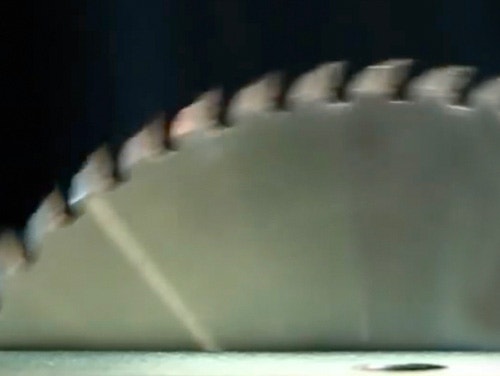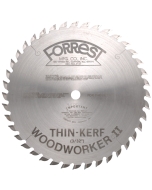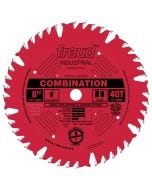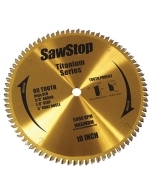Saw Blade Glossary
Saw blades come in many shapes and sizes, have many different uses and are used in a variety of machines. This glossary includes all the important terms you need to know related to saw blades.
Shop Our Selection of Saw Blades
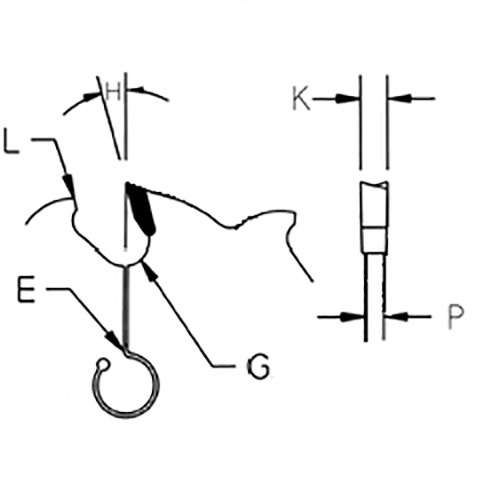
E - Expansion SlotsLaser cut expansion slots in some saw blades that make room for blade plate expansion caused by heat from friction. |
G - GulletsThe space cut out from blade plate between the teeth of a saw blade. The gullets provide room for chips and waste to exit the cut. |
H - Hook AngleThe amount that a saw blade tooth either tips toward or away from the direction of the blade rotation. A zero degree hook angle means that the face of the teeth are in line with the exact center of the blade. |
K - KerfThe slot a saw blade cuts into a material. A 10" "full kerf" saw blade usually has a kerf width of around 1/8". A 10" "thin kerf" will typically have a kerf width of approximately 3/32" (.094"). |
L - Kickback LimitersSome blades have kickback limiting tabs positioned behind the saw blade teeth to help keep the blade from over-feeding. |
P - Blade PlateSaw blade plates are usually made of hardened steel, which is tensioned to prevent the blade from becoming "floppy" due to centrifugal force at high rotation speeds. |
Alternate Top Bevel (ATB)"Alternate top bevel" means that the saw blade teeth alternate between a right and left hand bevel. This tooth configuration gives a smoother cut when crosscutting natural woods and veneered plywood. The alternating beveled teeth form a knife-like edge on either side of the blade and make a cleaner cut than flat top teeth. |
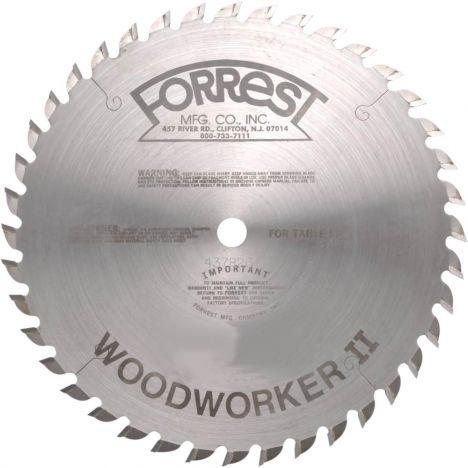 |
Combination Tooth (Comb.)The combination (4 and 1) configuration is used for "combination" blades - blades designed to do both crosscutting and ripping. The teeth are arranged in groups of five - four ATB teeth and one FT - with a large gullet in between the groups. |
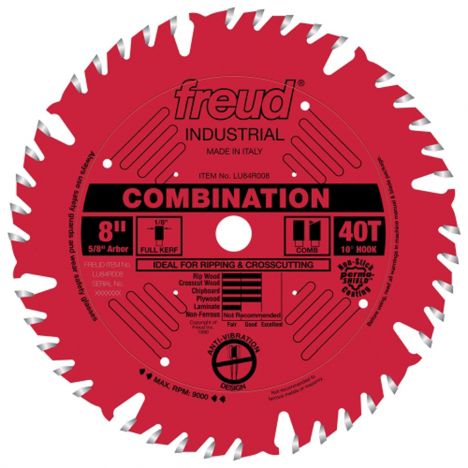 |
Triple Chip Grind (TCG)The TCG configuration excells at cutting hard materials like laminates, MDF, and plastics. Teeth alternate between a flat raking tooth and a higher "trapeze" tooth. The TCG configuration is also used for non-ferrous metal cutting blades. |
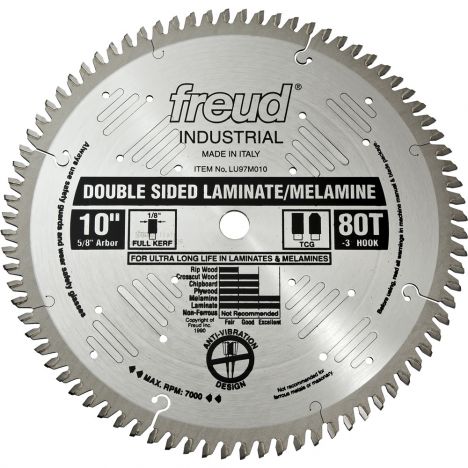 |
High Alternate Top Bevel (HiATB)The HiATB configuration is used for extra-fine crosscutting and to cut materials surfaced with melamine, which is prone to chipping. The high bevel angle increases the knife-like action at the edge of the blade. |
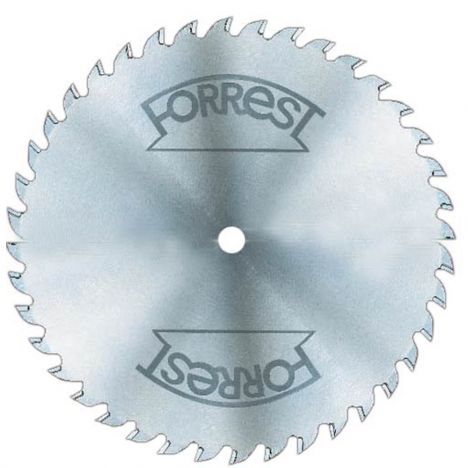 |
Shop Our Selection of Saw Blades
Keep the inspiration coming!
Subscribe to our newsletter for more woodworking tips and tricks
